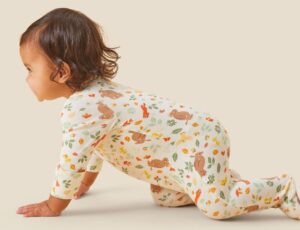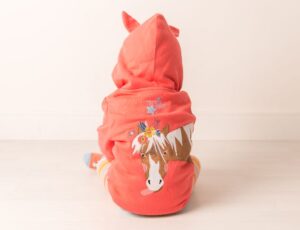
Following claims by Seraphine that Jojo Maman Bébé copied five of its designs, Paul Herbert of Goodman Derrick LLP discusses copyright issues in fashion.
Imitation is said to be the sincerest form of flattery. However, in the clothing industry, it can stray into the realms of intellectual property infringement; especially in the world of fast-moving or transient fashion clothing.
The most relevant form of protection for clothing designs in the UK involves delving into the world of design rights. Specifically, UK and EU unregistered designs and UK and EU registered designs.
Perhaps surprisingly copyright is of far less relevance in clothing. This is because articles of apparel rarely qualify as “works of artistic craftsmanship”; the only category of copyright of potential relevance. Plus, that only applies to the decoration of articles of clothing. Or articles which themselves involve a sufficient element of craftsmanship.
Unregistered design rights protect the shape or configuration of the whole or part of an article of clothing; excluding any surface decoration. To qualify, the design must be original. In the sense that it involved inspiration and creativity and is not merely a copy of something else.
The period of protection is brief – 10 years from the date of first marketing.
But then again, in the clothing context this is probably enough, especially where fashion is concerned. These criteria were neatly tested in one court case.
It was held that a design illustrating the choice of colourways for a tracksuit top did not qualify for copyright protection. But the design could neither be protected as a design right since the colourways were mere surface decoration and not part of the shape or configuration. (Lambretta Clothing –v- Teddy Smith 2004).
Ironically for Lambretta, that decision pre-dates the introduction of a new European Community unregistered design right. This now protects the design of the appearance of an item of clothing resulting from the colours of the product itself or its ornamentation.
Although this new protection applies on an EU wide basis, it is remarkably brief in span. It applies for only three years from the date on which the design was first made available to the public.
A registered design is available either in the UK or EU wide to protect the appearance of an article of clothing resulting from various features. For instance, lines, contours, shapes, colours, texture or materials of the product or its ornamentation. This is helpfully wide. Plus it lasts for up to 25 years. However, it only applies to the extent that the product is “new” and has “individual character”.
This is a high bar in the clothing context. A design is only considered to be new if no identical design has previously been made available to the public. Furthermore, individual character is only present if the overall impression it creates differs from the overall impression produced by any previous design.
Good housekeeping is always helpful in the form of a document trail that records the creation process; helping ascertain ownership of rights in the original work and date of first creation in the event of a dispute with a rival.
Copyright notices can feature on the design drawings in the form of a ©. Following this is the name of the copyright owner and the date of first creation.
In relation to the designs themselves, proprietors should mark the goods and accompanying packaging and documentation with “Design Right”. Following that should be the name of the design right owner and the year of first marketing. This should act as a deterrent to potential infringers.
Other considerations are that the brand name and/or logo of the owner or retailer may be registrable as a trademark. If not, the owner may be able to rely on the remedy of “passing off” to prevent unauthorised use of the mark. It would need to establish that it has goodwill or reputation in the mark or branding that the infringer has hijacked or copied.
Venturing into even deeper realms, where the clothing involves some innovative process or feature such as durability or stain or water resistance, this may constitute an invention which qualifies for patent protection.
In a cruel application of the adage that money talks, the reality is that IP rights are of limited relevance as far as everyday clothing is concerned. High fashion and couture are the main likely beneficiaries.
Paul Herbert is a partner at Goodman Derrick LLP, the London law firm.












